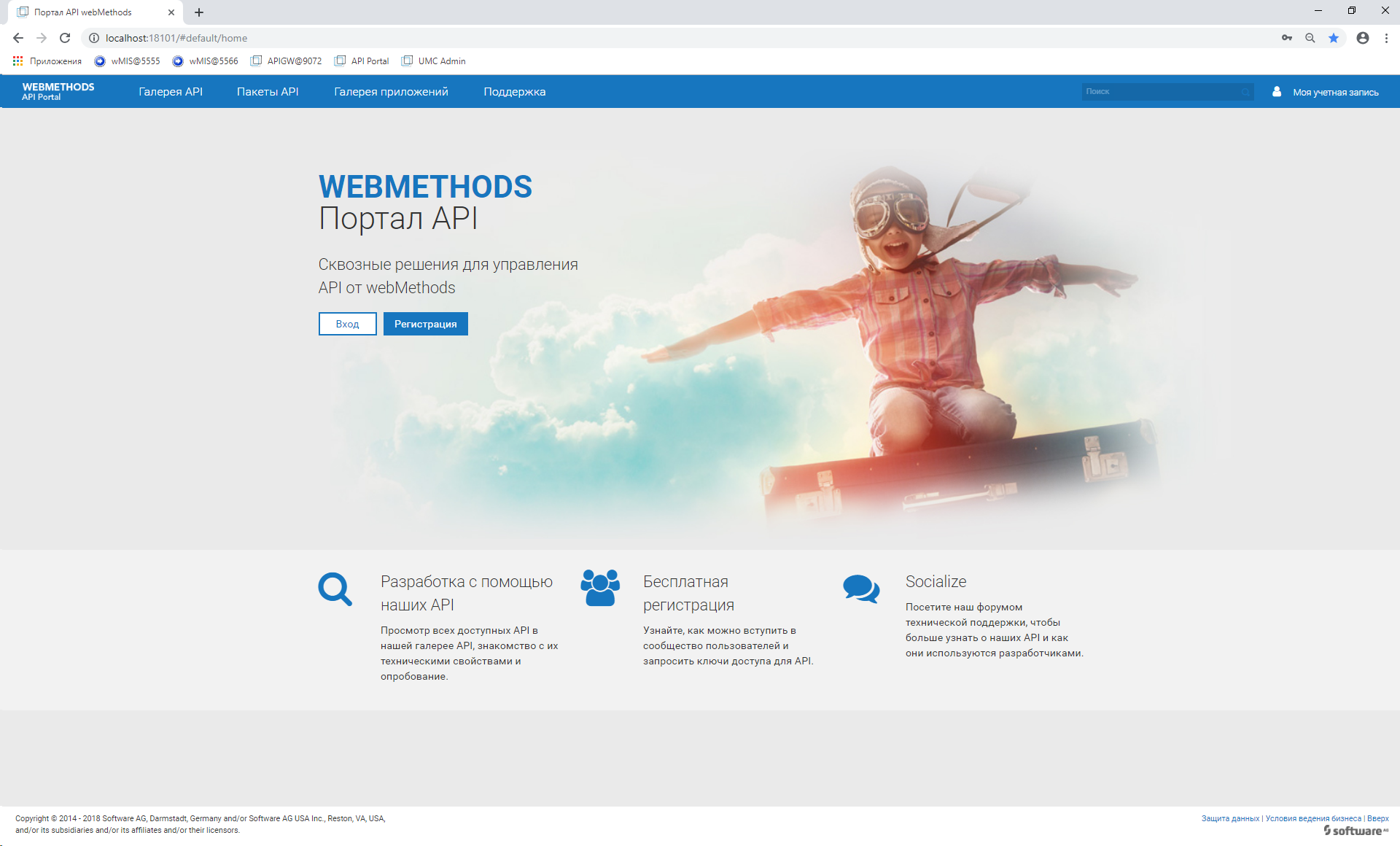The modern world rests on the API
Today’s world rests on application programming interfaces - APIs. With them, it has become possible to receive data and consume services through web applications, mobile applications and devices connected to the network. Increasingly, interaction on the Internet is performed through the API. Thanks to the API, new business models emerge, and the Internet has become a universal business platform.
The API does not have an industrial peg, companies from different sectors of the economy see their value in their use for their business. In turn, the API management software market is rapidly evolving, according to reports by Gartner and Forrester .
Just a few years ago, interaction between different departments of the same business was usually provided through an integration bus. But the model of interaction through the API portal — the portal on which APIs are published — turned out to be so convenient that it is now used inside companies.
How did it happen that, even when choosing a model of interaction between departments, companies are now inclined towards API-based solutions? What is the essence of the current technological model and what are the new rules of the game?
Open API - mod or necessity?
Using open APIs is not just a fashion or a spirit of the times, it is a response to market demands. Banks, telecommunications companies and insurance organizations are already publishing their services for external use, for integration with partners and for automating financial flows. It looks like the day is near when suppliers of entertainment, operational services and physical goods will join them.
In Europe, interest in innovations in the area of financial flows was supported by the payment directive of the European Parliament PSD2, issued to create a more even, transparent and open payment market that will promote innovation, competition and security. In Russia, the development of open APIs is officially recognized as a key element necessary for the effective integration of systems of financial market participants.
The Russian state and its financial sector have already realized the need for open banking. The provision of banking APIs to external organizations is recognized as a key element necessary for the effective integration of financial market participants' systems, and the release initiatives of open APIs are supported by the Central Bank, the Banki.ru portal, the Moscow Exchange, the National Clearing Center and the National Settlement Depository. Some banks have already formulated their open banking strategy, decided on a model for further actions, officially announced access to their systems and services through open APIs, and began to work accordingly.
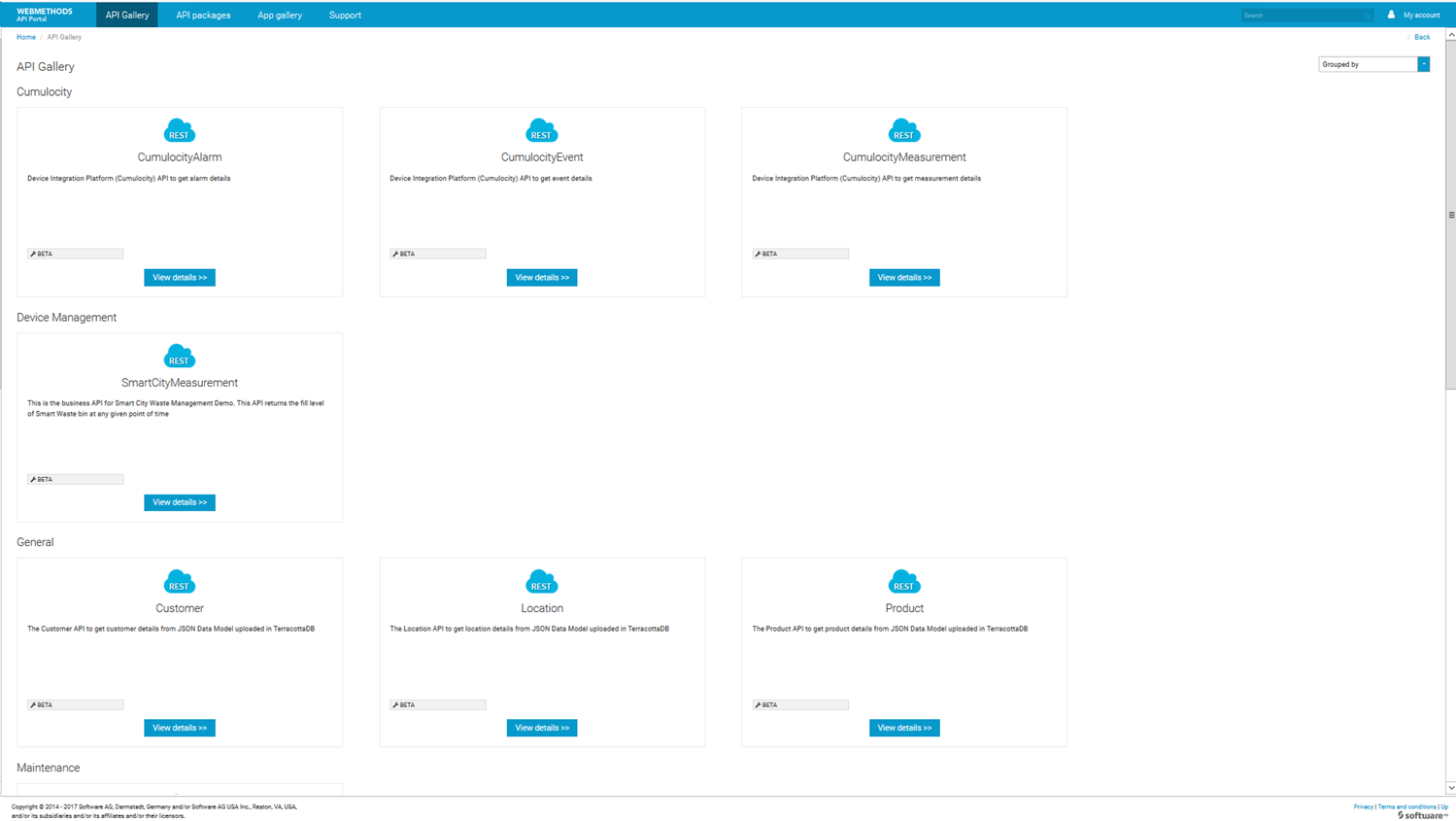
Domestic mobile operators also offer new platforms with an API for the development of their partners' businesses. This will allow telecommunication providers to support their partners by combining their offers and expanding the market for them.
Russian banks and telecommunication providers are precisely those enterprises that were the first to recognize themselves as software developers, and the market as a large digital platform for managing products, setting up marketing campaigns and interacting with potential customers. Product teams, customers, companies and customers understand that the more open they are, the more open their products will be, and the faster they will integrate into the overall ecosystem of the markets in which they operate. Therefore, they use open APIs - a reasonable and efficient way of interaction between developers, which allows dramatically reducing the time to market for new products.
In addition, open APIs are presented to their partners by such software developers as Yandex. Russian Post also offers integration with external applications through the API, which allows you to integrate the Russian Post services into third-party sites, applications, accounting systems and workflows - for example, add parcel tracking functions to sites.
And, of course, creating open API products is natural for software developers themselves, such as Software AG. The more fully their products are documented and the better they are managed, the more they will have users.
But the management of open API is not given to anyone from above. It is impossible without an appropriate technology stack.
Who develops API platforms and how they work
According to the aforementioned “magic quadrant” of Gartner agency , the leaders in the market for API full lifecycle management systems are Google, CA Technologies, IBM, Software AG, MuleSoft, Red Hat and TIBCO Software. In a recent study, Forrester calls IBM, Google, Software AG, Rogue Wave Software and WSO2 the leaders.
According to the Forrester report: “The APIs are a key foundation for digital transformation. They help streamline customer experience, create integrated digital ecosystems of customers and partners, enable companies to capitalize on breakthrough digital innovations, increase operational efficiency, and lay the foundation for platform-based business models ... API management solutions play a central role in managing vendor-user relationship , developers and application vendors should see them as business applications that are critical to the success of the digital business. ”
')
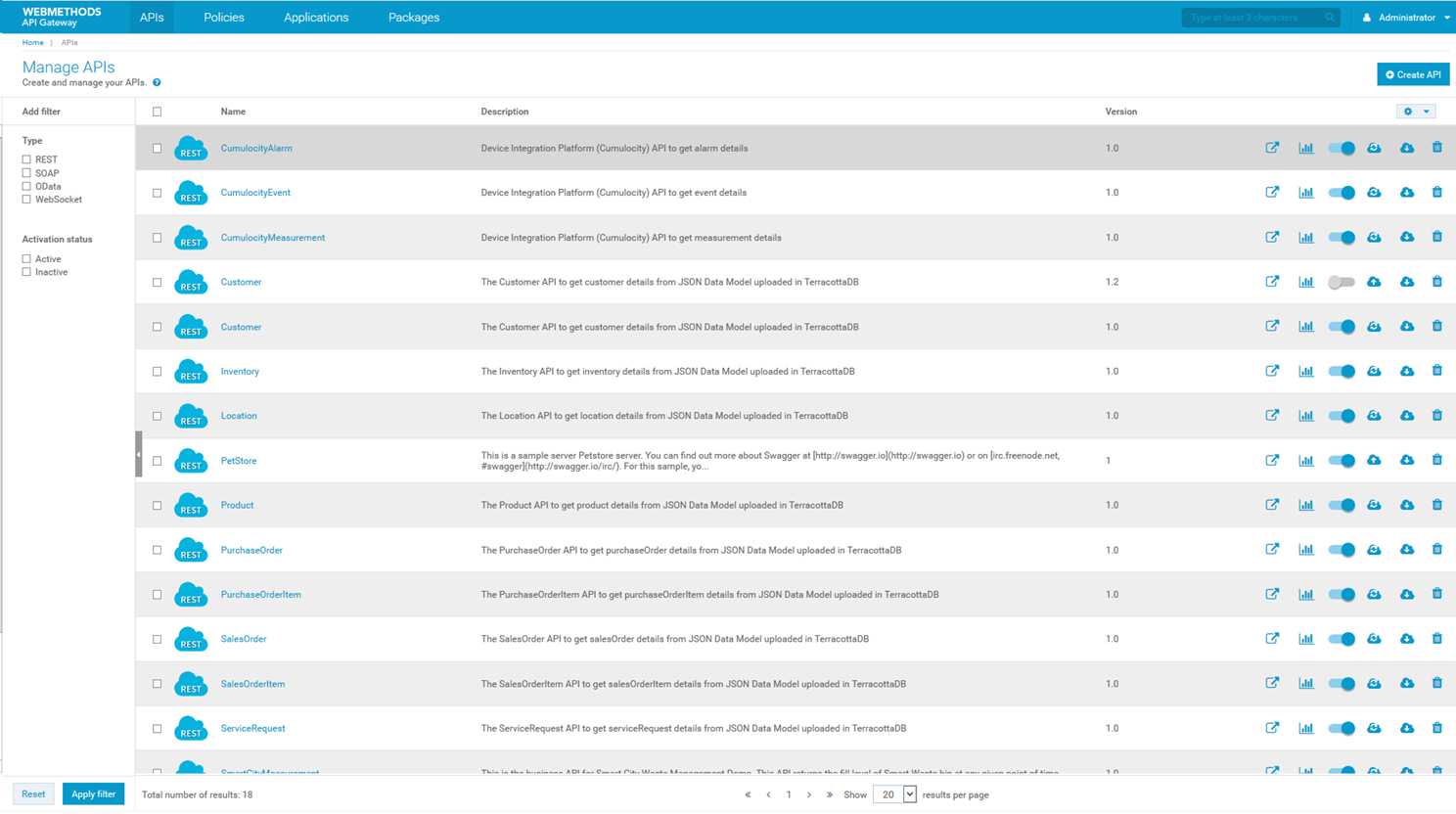
“Without providing full-fledged API lifecycle management, you cannot create a platform for a digital strategy, build an ecosystem, and launch effective products,” adds Gartner in its report.
What do systems provide for managing the full lifecycle of an API? Typically, the API life cycle management stack includes API publishing tools on an easy-to-read portal, the main user of which is third-party developers, the operating environment, consumption, maintenance, API version management and means for decommissioning them. Some developers (including Software AG) also provide tools for planning, designing, implementing, and testing APIs.
We at Software AG were in charge of managing the API, when it was also called “internal interaction”. We have expanded and improved middleware, application integration solutions, systems for building an enterprise service bus, and tools for building systems based on a service-oriented architecture.
In 2004, in addition to our integration bus, we created a B2B Trading Networks product designed for inter-partner interaction and data exchange. It was implemented quite classic user scenarios of inter-partner interaction, including continuous monitoring, service, data exchange on the basis of the operating day. Then it was not yet called open API.
Finally, five years ago, we introduced the full API management lifecycle as part of the webMethods API management platform. In 2014, we launched the webMethods API Portal for API developers, and in 2016 we combined the functionality of the webMethods API Gateway API , portal and mediation and lifecycle management tools into one platform. These tools support the development of the API, their assembly, approval and publication in an accepted technological standard and are part of the Software AG Hybrid Integration & API platform.
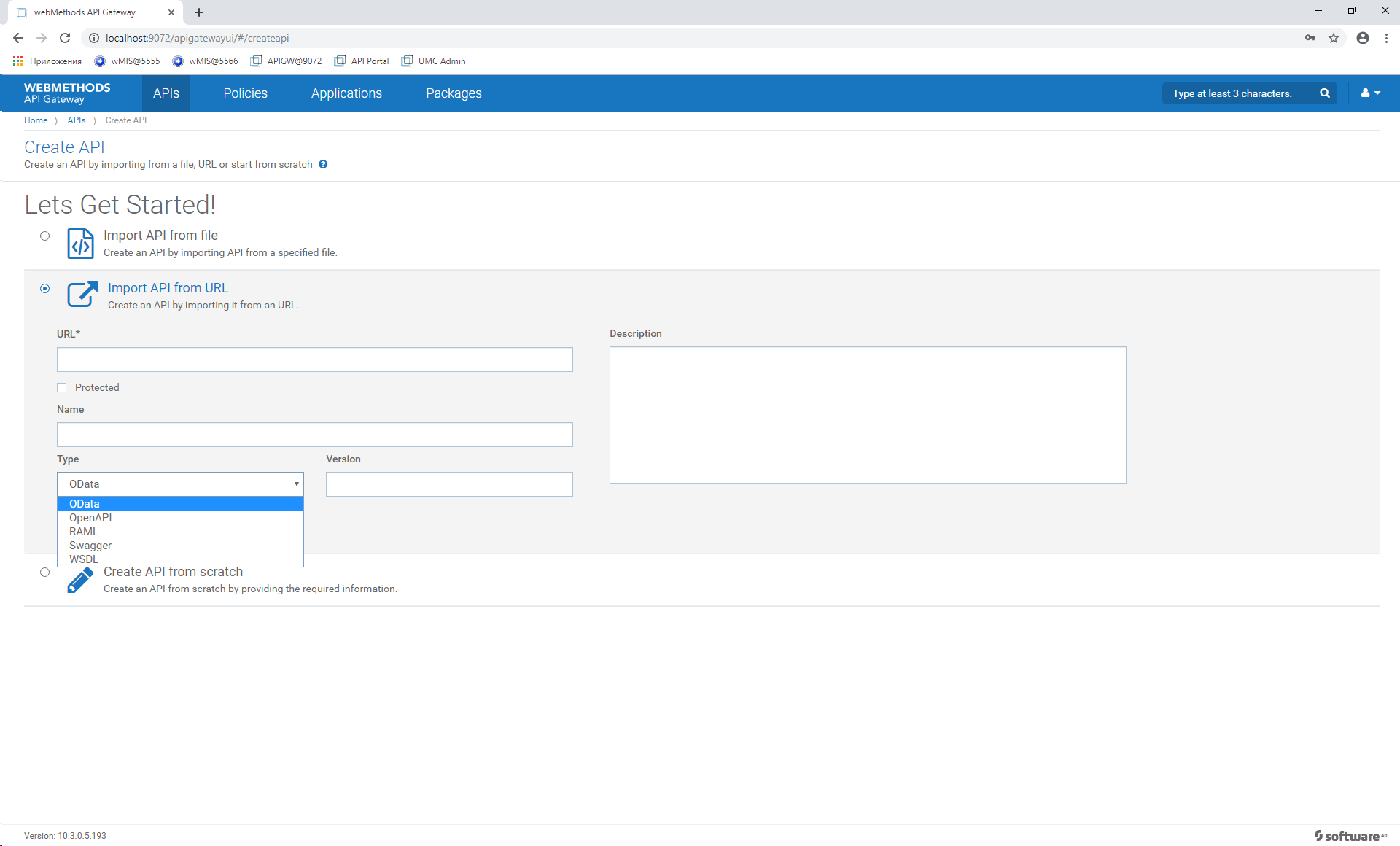
How to choose an API platform
Forrester believes that when choosing an API management solution, you must first consider whether the proposed solution is comprehensive - that is, it contains the API portal for developers, the API management portal, and the API gateway. It is particularly noted that some solutions provide additional components, such as API design and development tools, integration platforms, real-time service management platforms, etc.
Forrester further emphasizes that the API management solution must be a true standalone product, detachable from any associated platforms, integration products, or business applications.
Finally, the report's authors believe that it is worth trusting to those solution developers who have a number of full-fledged implementations. Software AG management API clients include Michael Kors (a manufacturer and supplier of high-class clothing and accessories), American Electric Power (one of the largest North American energy companies), Outerwall (a supplier of automated kiosks for retail sales), Dick's Sporting Goods (sports retail network). goods), EDF (the largest French state-owned power generating company and the world's largest operator of nuclear power plants), etc.
To this list of parameters it is worth adding a few more factors that need to be taken into account when choosing an API platform.
1. The economy works differently in different sectors and has different monetization schemes. Evaluate the development plan for the API platform you are considering. Does it reflect the realities of your business segment? It is important to define the business task of implementation, form a list of business requirements for the solution and derive from it a list of functional and architectural requirements. Perhaps this list will determine the choice of not only API-solutions, but also additional components.

API Policy Management
2. It is very important that your API platform meets the expectations of your customers, or rather their IT departments. The platform should be convenient for implementation and operation, it should support a technological deployment model (cloud, physical or hybrid) that is comfortable for customers, its functionality should meet their current needs, and its development plan should meet their future needs for a year or two ahead.
3. API-portal should have ample analytics, test interfaces for developers, the ability to generate documentation based on API metadata. It should provide social collaboration for developers, client SDK generation and monetization tools.
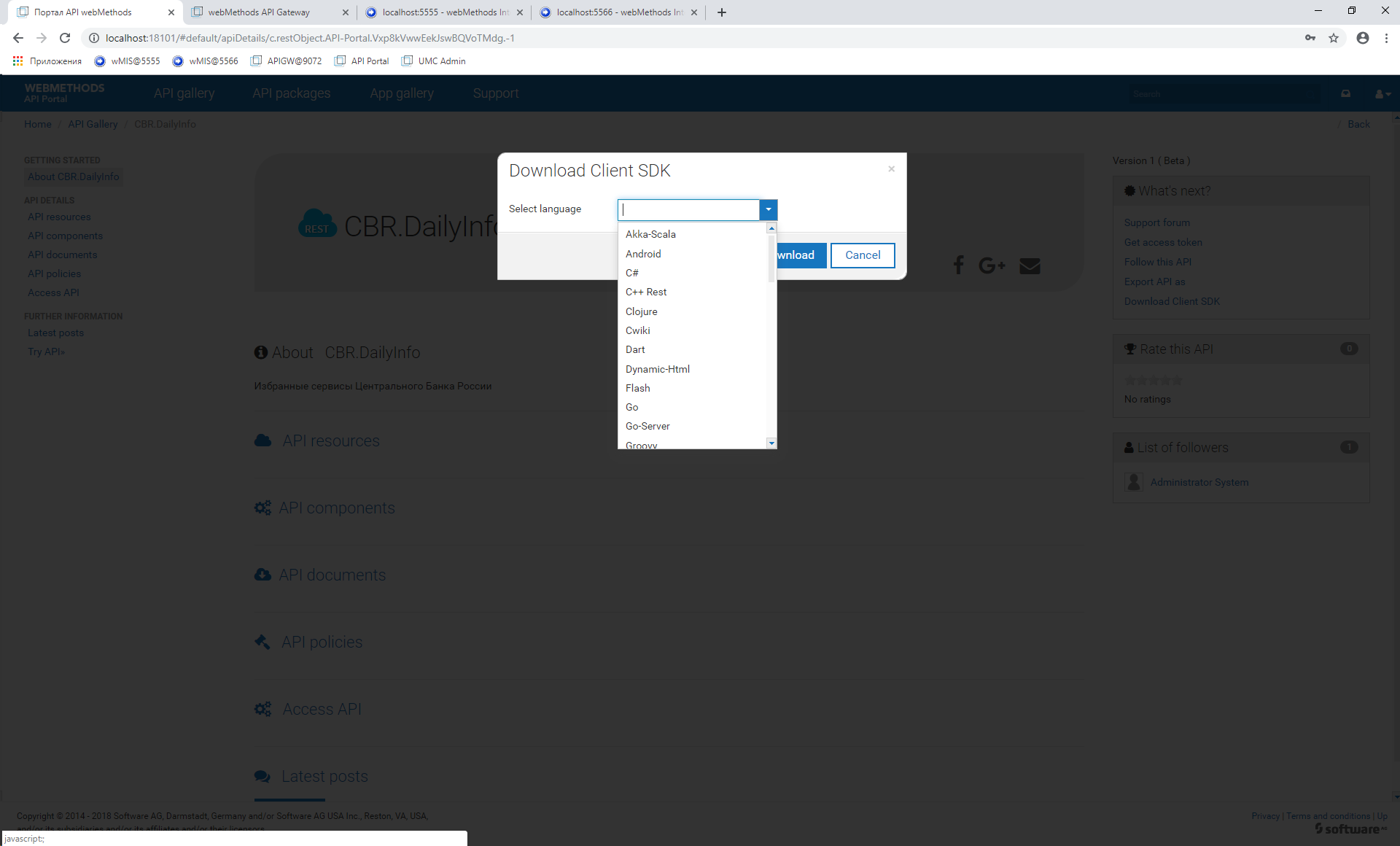
Client SDK generation
4. The API gateway must provide security (authentication, authorization, security policy management, protection against attacks), service mediation, routing and load balancing capabilities.

5. API life cycle management tools should provide and evaluate the interconnection of internal and external services, microservices and regular services, technical and business services, as well as support for various types of “assets” in the catalog.
6. A very important issue is the total cost of ownership of solutions, which depends on the speed of product development and the time they take to market — and this is also influenced by the practices adopted by the developers and the technologies they use.
7. The question which API platform developers often do not have is the answer - how the contract between the customer and the partner will be created and how the billing will work - the vendor most likely has recommendations on the implementation of the technological possibility of creating the contract.
* * *
Well, in fact, the API is nothing new - just before they were internal. Due to today's wave of interest in APIs, it already seems to many that this abbreviation has always indicated how companies interact via the Internet, but in fact the API provides ways of interaction between products, technological services and their consumers, which may belong to different market players, companies and customers and various business groups within the company.
Our integration product exists and develops for many years, it is stable and mature, it is used by many customers. To evaluate it yourself, visit our free test software web page , where you can easily find the various components of the webMethods platform. Test webMethods API Cloud Free Trial right now and tell us about your impressions.
Source: https://habr.com/ru/post/449544/
All Articles
